- Home
- Tom Clancy
Checkmate sc-3 Page 2
Checkmate sc-3 Read online
Page 2
“Any sign of life aboard?”
“None. The infrared signature is so hot we can’t tell if there are warm bodies aboard.”
Lambert said, “Best to assume so, Sam. What’s your time-to-target?”
“Nine minutes.”
“Not much time. The F-16s are authorized to shoot four minutes after you land.”
“Then I guess I better show up early,” Fisher said, and signed off.
He flipped his trident goggles down over his eyes and switched to night vision, then rotated his body, head down, legs straight out and up. The Goshawk responded instantly and dove toward the ocean.
He kept his eyes fixed on the OPSAT’s altimeter as the numbers wound down:
2000 feet… 1500… 1000… 500… 300.
He arched his back and swung his knees to his chest. The Goshawk shuddered. In the gray-green of Fisher’s NV goggles, the ocean’s surface loomed, a black wall filling his field of vision. Come on… The Goshawk flared out and went level. The horizon appeared in the goggles.
Call that the Goshawk’s extreme field test, Fisher thought, giving the parafoil a silent thanks.
He checked the OPSAT. The freighter was two miles ahead and slightly to the east. He banked that way and descended to one hundred feet.
He tapped APPROACH on the OPSAT’s screen and the view changed to a wire-frame 3D model of the Trego bracketed by a pair of flashing diagonal lines. He switched his goggles to binocular view and zoomed in until he could see the faint outline of the ship’s superstructure silhouetted against the sky. He saw no movement on deck. Astern, the ship’s wake showed as a churned white fan. Aside from the port and starboard running lights, everything was dark.
Sam zoomed again. Two miles beyond the freighter’s bow he could see the dark smudge of the coast; beyond that, the twinkling lights of Virginia Beach.
And half a million people, he thought.
He matched his angle-of-descent with the OPSAT’s readout until he was one hundred feet off the Trego’s stern, then arched his back, lifting the Goshawk’s nose. As he flared out and the aft rail passed beneath his feet, a gust of wind caught the Goshawk. Fisher was pushed sideways, back over the water. He twisted his body. The Goshawk veered right. He bent his knees to take the impact.
With a surprisingly gentle thump, he touched down.
In one fluid movement, he reached up, pulled the Goshawk’s “crumple bar” to collapse the parafoil, disengaged his harness, then dragged it to a nearby tie-down cleat in the deck and locked it down using the D ring.
Suddenly, to his right he heard a roar. He glanced up in time to see the underbelly of an F-16 swoop past, wing strobes flashing in the darkness. Then it was gone, climbing up and away.
Giving me fair warning? Sam wondered. Or wishing me good luck?
He looked around to get his bearings, tapped his earpiece, said, “I’m on deck,” then drew his Beretta and sprinted toward the nearest ladder.
3
When he reached the top of the ladder, he dropped into a crouch and ducked behind a nearby crate. He went still, listened. Aside from the rhythmic chug of the Trego’s engines and the snapping of tarps in the wind, all was quiet.
He called up the ship’s blueprint on the OPSAT. He was on the main deck; the bridge was near the bow, some four hundred feet away. To get there, he could either duck belowdecks and make a stealthy approach, or make a straight sprint in the open. His preference would have been the former, but time was not on his side.
He keyed his subdermal: “Tell me something, Grimsdottir: Exactly how hot is this ship?”
“You mean how long can you stay aboard before you start glowing?”
“Yeah.”
“Hard to say, but I wouldn’t linger more than fifteen minutes.”
“Good to know. Out.”
Fisher took a breath and started running.
* * *
In the murky display of his NV goggles the deck was a flat moonscape broken only by the occasional stack of crates. He felt naked, exposed. However necessary, this dash in the open went against his every instinct. Don’t think, he commanded himself. Run.
Halfway to the bridge, he glanced up and saw a shadowed figure standing on the port bridge wing. The figure turned and darted through the bridge hatch.
“I’ve got company,” Fisher told Lambert. “Somebody’s on the bridge.”
“Where there’s one, there’s more.”
Maybe, Fisher thought. Maybe not. One possibility was that the ship was automated. If so, the man he just saw could be the fail-safe.
“How much time, Grim?” Fisher asked.
“Four minutes. The F-16s have gone weapons-free, waiting for the order to fire.”
* * *
He reached the superstructure, flattened himself against the bulkhead, and slid forward to the foot of the ladder. He glanced up through the slats, looking for movement. There was nothing. On flat feet, he started upward, taking steps two at a time until he was near the top, where he dropped to his belly, slithered up the final three steps, and peeked his head up.
Through the open bridge hatch he saw the man hunched over the helm console, his face bathed in milky white glow of a laptop screen. He looked Middle Eastern. Suddenly the man slapped his palm against the laptop and cursed. Over the whistling of the wind, Fisher couldn’t make out the words.
The man cursed again, then stepped to the ship’s wheel — a wagon-wheel style with spoked grips — and leaned over it, grunting with the strain.
Fisher rose up, leveled his Beretta, and stepped through the hatch.
* * *
“Stop right there, Admiral.” Fisher called.
The man whipped his head around. His eyes went wide.
“Not even a twitch, or you’re dead where you stand.”
The main straightened up and turned to face him.
Fisher said, “Step away from the—”
The man spun toward the laptop.
Fisher fired once. The bullet went where he wanted it, in this case squarely into the man’s right hip. The impact spun him like a top. As he fell, his outstretch arm caught the laptop, sending it crashing to the deck. Groaning, the man rolled onto his side and reached for the laptop.
What’s he—
Then Fisher saw it. Jutting from the side of the laptop was a wireless network card. He was linked to something, controlling something.
“Don’t move!” Fisher ordered.
The man’s hand stretched toward the keyboard.
Fisher fired. As with his first round, this one struck true, drilling into the the man’s right shoulder blade. He groaned and slumped forward, still.
Except for his right hand.
The man’s finger gave a spasmodic jerk and struck the ENTER key.
* * *
Instantly, the pitch of the Trego’s engines changed. The deck shivered beneath his feet.
Grimsdottir’s voice came on the line: “Fisher, the ship’s just—”
“Picked up speed, I know.”
He made a snap decision. The man’s frustration with the helm console was proof enough the wheel was locked down. That left only one other option.
He started running.
“Grim, I’m headed down the aft interior ladder. I need a countdown and I need on-the-fly directions to the engine room.”
“Go down three decks, turn right to port passage, and keep heading aft.”
The Trego’s passageways were dark, save for the red glow of emergency lights. Pipes and conduits flashed in Fisher’s peripheral vision as he ran. He leapt through a hatch and called, “Passing the mess hall,” and kept going.
Grimsdottir said, “Two more hatches, then you’ll reach an intersection. Go left. The engine room is at midships, aft side of the passage.”
“Time?”
“One minute, twenty seconds.”
He reached the passageway outside the engine room and skidded to a stop. He had a plan, but whether it would work he didn’t know
. As with all ships, engine spaces are the most vulnerable to fire, so Fisher had little trouble finding a hose-reel locker. He jerked open the cabinet and punched the quick-release lever. The hose fell in a coil on the deck.
Lambert’s voice: “One minute, Fisher. The F-16s will be targeting the engine rooms.”
Of course they will, Fisher thought. Wrong place, wrong time, but there was no other way.
Each Falcon would be shooting a pair of AGM-65 Maverick missiles. Deadly accurate and fast, each Maverick carried a three-hundred-pound high-explosive warhead. One way or another, crippled or sunk, the Trego would be stopped. On the upside, Fisher consoled himself, he would never feel a thing.
He drew his knife, pulled the hose taut, and sliced it off at the bulkhead. With one hand wrapped around the nozzle, Fisher used the other to undog the engine room hatch. He kicked it open and rushed through.
The thunder of the engines and the heat washed over him like a wave. He squinted, put his head down, and stumbled forward. Steam swirled around him. The space was a tangle of railing, catwalks, and pipes.
“Forty-five seconds, Fisher.”
“Working on it,” he replied through gritted teeth.
Luckily, the layout of the Trego’s engine room varied little from that of most ships. He made his way to the center of the space, looked for the largest structure, in this case a pair of car-sized shapes astride the main catwalk. The engines. Eyes fixed on the catwalk beneath his feet, he sprinted between the engines until he glimpsed a flash of spinning metal. There. He dropped to his knees.
“Thirty seconds…”
He pried back the catwalk grating to reveal the reduction gear — essentially, the ship’s driveshaft that transferred power from the engines to the screws beneath the stern. Spinning at full speed, the reduction gear was nothing but a blur of cogs.
If this worked, Fisher knew, the effect would be instantaneous. And if not…
He gathered the hose around his knees, then shoved it through the grate.
4
FORT MEADE, MARYLAND
The National Security Agency lies five miles outside the town of Laurel, Maryland, within the confines of an Army post named after the Civil War Union general George Gordon Meade. Once home to a boot camp and a WWII prisoner-of-war camp, Fort Meade has since the 1950s become best known as the headquarters of the most advanced, most secretive intelligence organization on earth.
Primarly tasked with the conduct of SIGINT (Signals Intelligence) in all its forms, the NSA can, and has at times, intercept and analyze every form of communication known to man, from cell phone signals and e-mail messages, to microwave emissions, and ELF (Extremely Low Frequency) burst transmissions from submarines thousands of feet beneath the surface of the ocean.
Hoping to bridge the chasm between simply gathering actionable intelligence and acting on that intelligence, the NSA had years earlier been directed by special Presidential charter to form Third Echelon, its own in-house covert operations unit.
Third Echelon operatives, known individually as Splinter Cells, were recruited from the special forces communities of the Navy, Army, Marine Corps, and Air Force, then shaped into the ultimate lone operators, men and women capable of not only working alone in hostile environments, but of doing so without leaving a trace.
* * *
Fisher’s sudden introduction of the fire hose to the Trego’s reduction gear had had an immediate effect. With a sound that was a cross between a massive zipper and a bullwhip, all fifty feet of the hose disappeared into the catwalk in the blink of an eye. Fisher threw himself backward and curled into a ball.
The engines gave a screech of metal on metal. The catwalk trembled. Black smoke burst through the grating, followed by thirty seconds of rapid-fire pings and clunks as the reduction gear tore itself apart. Shrapnel zinged around the engine room, bouncing off bulkheads and railings and punching holes in conduits. Alarms began blaring.
And then suddenly it was over. Through the slowly clearing smoke he could see the smoldering remnants of the fire hose wrapped around the mangled shaft. He became aware of the faint voice in his subdermal. It was Lambert. “… Fisher… Fisher, are you—”
“I’m here.”
“Whatever you did, it worked. The Trego’s slowing, coming to a stop.”
“I sure as hell hope so. Now tell the pilots to break off before I get a missile down my throat.”
* * *
Now, four hours later, sitting under dimmed track lighting at the polished teak conference table in Third Echelon’s Situation Room, Fisher shifted in his chair, trying to avoid the dozen or so bruises he’d gathered aboard the Trego. It was nothing a liberal dose of ibuprofen wouldn’t cure. Besides, he told himself, given the alternatives, he’d take bruises over shrapnel or flaming chunks of fire hose any day. Getting old was hell, but getting dead was worse.
Per Lambert’s orders, his first stop after leaving the Trego had been at the Army’s Chemical Casualty Care Division, located at Aberdeen Proving Ground in Maryland. A division of the Army’s Medical Research Institute, the CCCD specializes in the decontamination and treatment of biological, chemical, and radiological exposure. Fisher was sent through a series of decon showers and then poked and prodded by space-suited doctors before being declared “contaminant free.”
“Where are they taking the Trego?” he asked Lambert.
“She’s being towed to Norfolk’s secure shipyard.”
Lambert aimed a remote control at one of the half-dozen plasma screens that lined the Situation Room’s walls. A satellite image of Norfolk harbor faded into view. The Trego was easy to spot. Flanked by three Navy frigates and an Arleigh Burke-class destroyer, the freighter was under tow by a harbor tug.
“They’re prepping a dry dock for the NEST team as we speak.” Lambert said, referring to a Nuclear Emergency Search Team from the Department of Energy.
Before FBI investigators could board the Trego, the NEST would have to determine the source and level of the ship’s radioactivity. Luckily, so far it appeared nothing hot had leaked from the hull — something that certainly would have happened had she run aground.
“And our prisoner and his laptop?” Before boarding the Blackhawk helicopter Lambert had dispatched for him, Fisher had grabbed the laptop and then hoisted the Trego’s lone crewman onto his shoulder. In some cases, prisoners were better than corpses.
“Grim is working the laptop. Whatever key he pressed did more than set the engines to flank. It scrambled the hard drive, too.”
“Yeah, he seemed a tad determined. He’s in medical?”
Lambert nodded. “He’ll make it.”
“Good,” Fisher said, taking a sip of coffee. He screwed up his face and frowned at the mug. “Who made this?”
“I did, thank you very much,” a voice said. William Redding, Fisher’s advance man and field handler, walked through the door. With his horn-rimmed glasses, sweater vest, and pocket protector, Redding was a bookworm of the highest caliber with an almost fanatical focus on planning and details. As annoying as his intensity could be, Fisher couldn’t imagine going into the field without Redding guarding his flanks.
“And by the way,” Redding said, “the nerds from DARPA called. They want to know what you did with their Goshawk.”
Fisher said, “Let me get this straight: You’re calling the DARPA people nerds?”
Lambert chuckled under his breath. Redding wasn’t known for his sense of humor.
“I’m a geek, Sam. They’re nerds. There’s a profound difference.”
“My apologies.”
“The Goshawk?”
“Safe in the equipment room.”
“And its condition?”
“Hard to say, given how little there was left of it.”
Redding’s eyes narrowed. “Pardon me?”
“There was fire—”
“Pardon me?”
“A joke. Relax, it’s as good as new.”
Redding was already heading
for the door. He stopped at the threshold, hesitated a moment, then turned back. “Sam?”
“Yeah?”
“Glad you’re in one piece.”
* * *
Grimsdottir walked in twenty minutes later. Born in Iceland, Anna was tall and statuesque, with a model’s cheekbones and short, brown-auburn hair — a choice Fisher suspected had more to do with function than it did with fashion. Above all else, Anna was practical. Worry about whether she was having a “hair day”—good or bad — wasn’t on her list of priorities.
“Welcome back, Sam. I don’t see anything glowing.”
“The day is young.”
“I talked to the docs at Aberdeen. They confirmed that whatever’s aboard the Trego, you didn’t receive enough of a dose to worry about.” She walked over to a nearby computer workstation and tapped a few keys. A frisbee-shaped 3D model of what Fisher assumed was the hard drive from Trego laptop appeared on the screen. The disk was broken into irregularly sized geometric chunks outlined in either red, green, or yellow.
Grimsdottir said, “Okay, what do you want first, the good news or the bad news?”
Lambert said, “Bad news.”
“All the red data sectors you see were wiped clean by the self-destruct program. They’re gone, period. No coming back.”
“That’s a lot of red,” Fisher said.
“About eighty percent. Green is probably recoverable; yellow is iffy.”
“And the good news?” Lambert said.
“I may be able to tell who wrote the self-destruct program.”
“How?”
“Most programmers have a signature — the way they block code, handle syntax, write background comments… Those kinds of things. Sometimes it’s as distinctive as handwriting. And I can tell you this: Whoever wrote this program is sophisticated; his signature is unique. It may take me a few—”
Suddenly a muted alarm came over the loudspeakers. In unison, all the computer monitors began flashing, their screens overlayed by a large red exclamation mark.
“Oh, God,” Grimsdottir murmured, staring at the screen.
“What?” Lambert said. “What’s going on?”

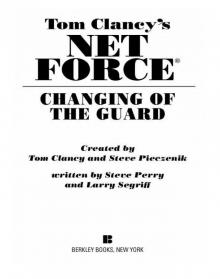 Changing of the Guard
Changing of the Guard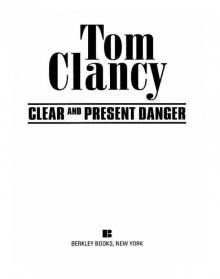 Clear and Present Danger
Clear and Present Danger Hounds of Rome
Hounds of Rome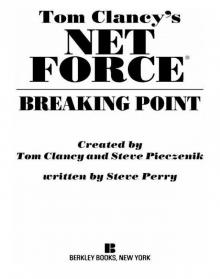 Breaking Point
Breaking Point Tom Clancy's Jack Ryan Books 7-12
Tom Clancy's Jack Ryan Books 7-12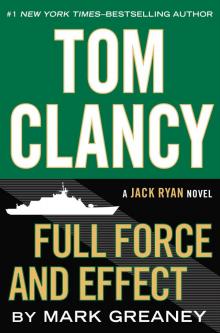 Full Force and Effect
Full Force and Effect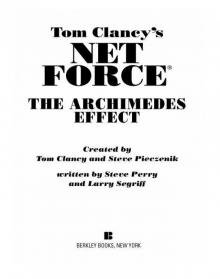 The Archimedes Effect
The Archimedes Effect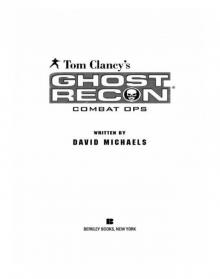 Combat Ops
Combat Ops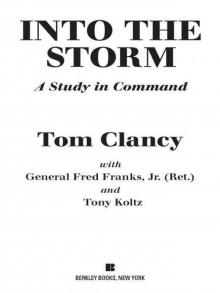 Into the Storm: On the Ground in Iraq
Into the Storm: On the Ground in Iraq Under Fire
Under Fire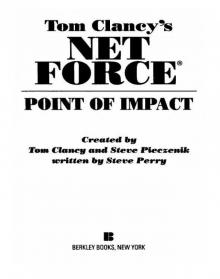 Point of Impact
Point of Impact Red Rabbit
Red Rabbit Rainbow Six
Rainbow Six The Hunt for Red October
The Hunt for Red October The Teeth of the Tiger
The Teeth of the Tiger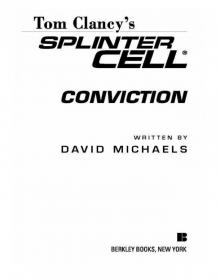 Conviction (2009)
Conviction (2009) Battle Ready
Battle Ready Patriot Games
Patriot Games The Sum of All Fears
The Sum of All Fears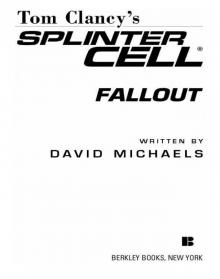 Fallout (2007)
Fallout (2007) Red Storm Rising
Red Storm Rising The Cardinal of the Kremlin
The Cardinal of the Kremlin Executive Orders
Executive Orders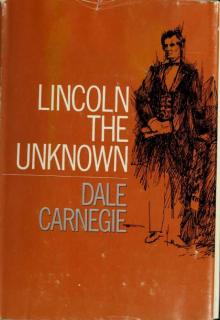 Lincoln, the unknown
Lincoln, the unknown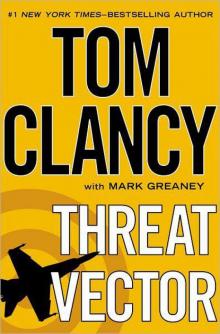 Threat Vector
Threat Vector The Hunted
The Hunted Shadow Warriors: Inside the Special Forces
Shadow Warriors: Inside the Special Forces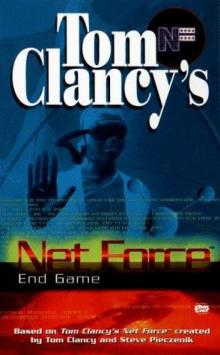 End Game
End Game Special Forces: A Guided Tour of U.S. Army Special Forces
Special Forces: A Guided Tour of U.S. Army Special Forces Locked On
Locked On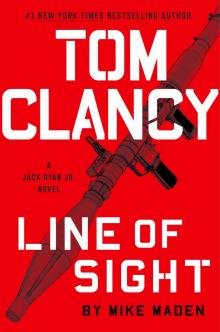 Line of Sight
Line of Sight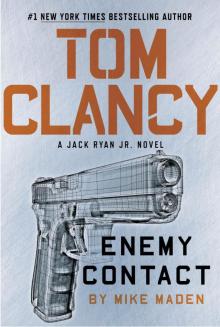 Tom Clancy Enemy Contact - Mike Maden
Tom Clancy Enemy Contact - Mike Maden Fighter Wing: A Guided Tour of an Air Force Combat Wing
Fighter Wing: A Guided Tour of an Air Force Combat Wing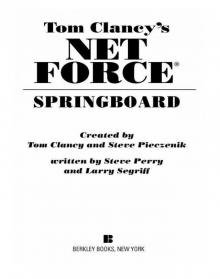 Springboard
Springboard Line of Sight - Mike Maden
Line of Sight - Mike Maden EndWar
EndWar Dead or Alive
Dead or Alive Tom Clancy Support and Defend
Tom Clancy Support and Defend Checkmate
Checkmate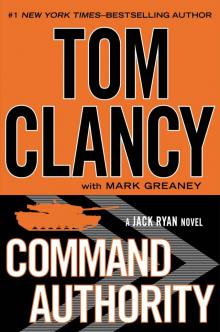 Command Authority
Command Authority Carrier: A Guided Tour of an Aircraft Carrier
Carrier: A Guided Tour of an Aircraft Carrier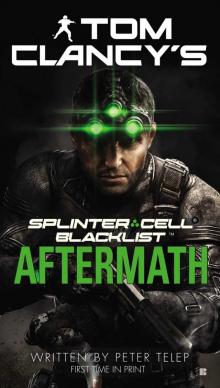 Blacklist Aftermath
Blacklist Aftermath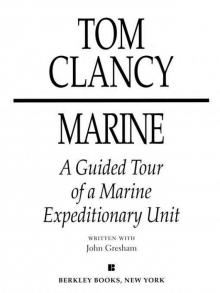 Marine: A Guided Tour of a Marine Expeditionary Unit
Marine: A Guided Tour of a Marine Expeditionary Unit Commander-In-Chief
Commander-In-Chief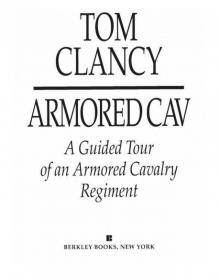 Armored Cav: A Guided Tour of an Armored Cavalry Regiment
Armored Cav: A Guided Tour of an Armored Cavalry Regiment Tom Clancy's Jack Ryan Books 1-6
Tom Clancy's Jack Ryan Books 1-6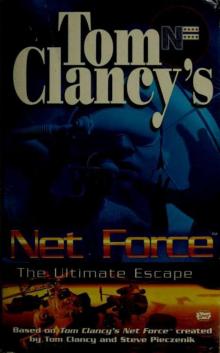 The Ultimate Escape
The Ultimate Escape Airborne: A Guided Tour of an Airborne Task Force
Airborne: A Guided Tour of an Airborne Task Force Debt of Honor
Debt of Honor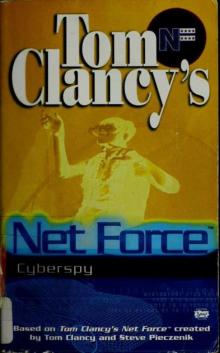 Cyberspy
Cyberspy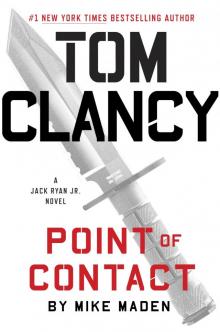 Point of Contact
Point of Contact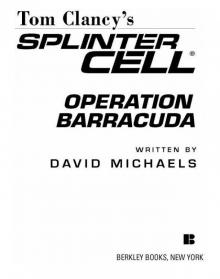 Operation Barracuda (2005)
Operation Barracuda (2005)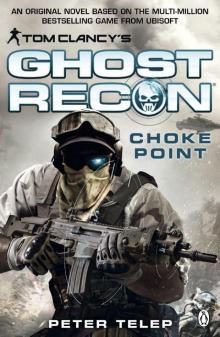 Choke Point
Choke Point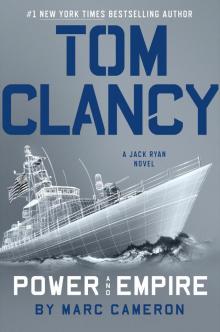 Power and Empire
Power and Empire Every Man a Tiger: The Gulf War Air Campaign
Every Man a Tiger: The Gulf War Air Campaign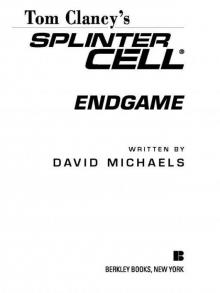 Endgame (1998)
Endgame (1998)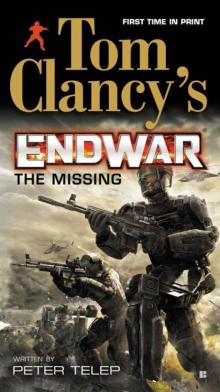 EndWar: The Missing
EndWar: The Missing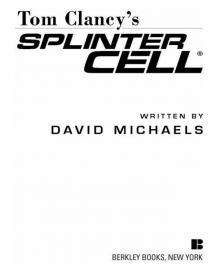 Splinter Cell (2004)
Splinter Cell (2004)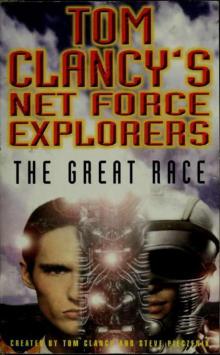 The Great Race
The Great Race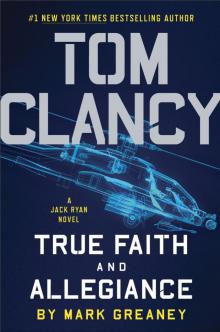 True Faith and Allegiance
True Faith and Allegiance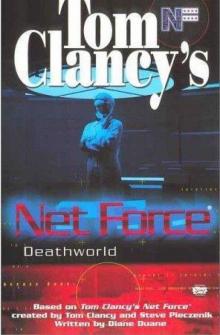 Deathworld
Deathworld Ghost Recon (2008)
Ghost Recon (2008)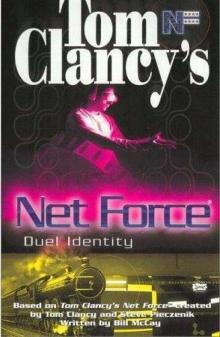 Duel Identity
Duel Identity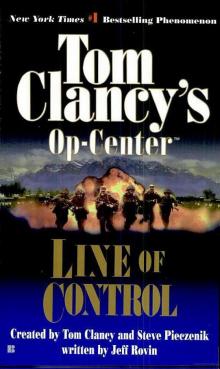 Line of Control o-8
Line of Control o-8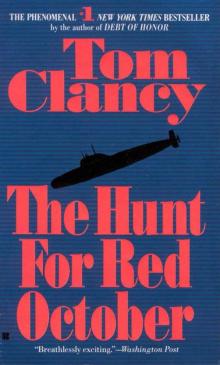 The Hunt for Red October jr-3
The Hunt for Red October jr-3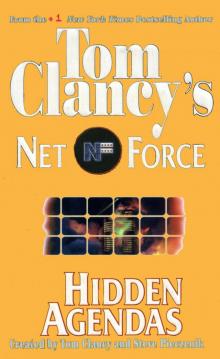 Hidden Agendas nf-2
Hidden Agendas nf-2 Acts of War oc-4
Acts of War oc-4 Ruthless.Com pp-2
Ruthless.Com pp-2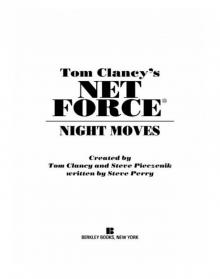 Night Moves
Night Moves The Hounds of Rome - Mystery of a Fugitive Priest
The Hounds of Rome - Mystery of a Fugitive Priest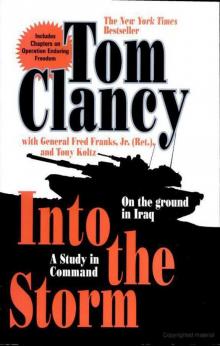 Into the Storm: On the Ground in Iraq sic-1
Into the Storm: On the Ground in Iraq sic-1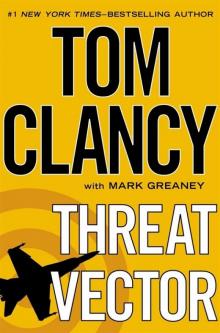 Threat Vector jrj-4
Threat Vector jrj-4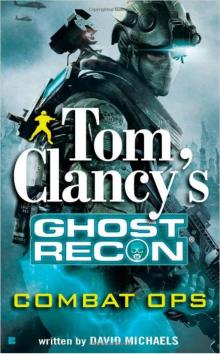 Combat Ops gr-2
Combat Ops gr-2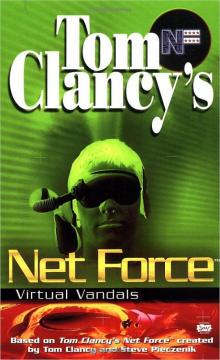 Virtual Vandals nfe-1
Virtual Vandals nfe-1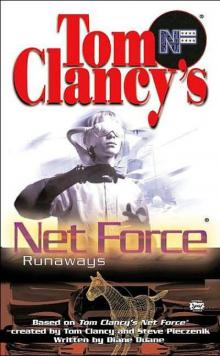 Runaways nfe-16
Runaways nfe-16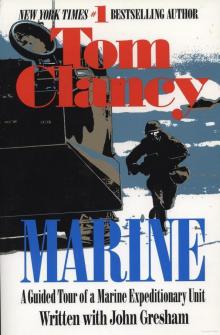 Marine: A Guided Tour of a Marine Expeditionary Unit tcml-4
Marine: A Guided Tour of a Marine Expeditionary Unit tcml-4 Shadow Warriors: Inside the Special Forces sic-3
Shadow Warriors: Inside the Special Forces sic-3 Jack Ryan Books 1-6
Jack Ryan Books 1-6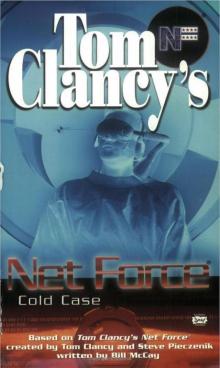 Cold Case nfe-15
Cold Case nfe-15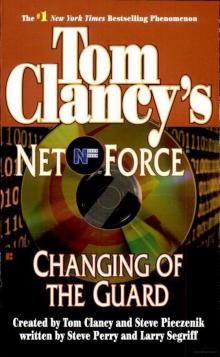 Changing of the Guard nf-8
Changing of the Guard nf-8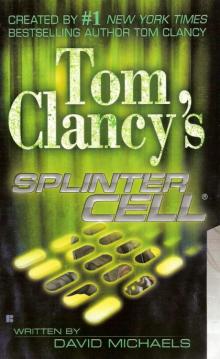 Splinter Cell sc-1
Splinter Cell sc-1 Battle Ready sic-4
Battle Ready sic-4 The Bear and the Dragon jrao-11
The Bear and the Dragon jrao-11 Fighter Wing: A Guided Tour of an Air Force Combat Wing tcml-3
Fighter Wing: A Guided Tour of an Air Force Combat Wing tcml-3 Patriot Games jr-1
Patriot Games jr-1 Jack Ryan Books 7-12
Jack Ryan Books 7-12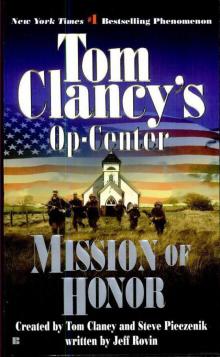 Mission of Honor o-9
Mission of Honor o-9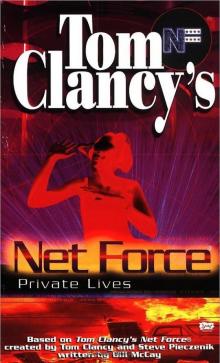 Private Lives nfe-9
Private Lives nfe-9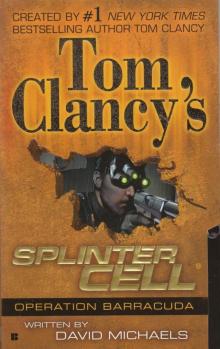 Operation Barracuda sc-2
Operation Barracuda sc-2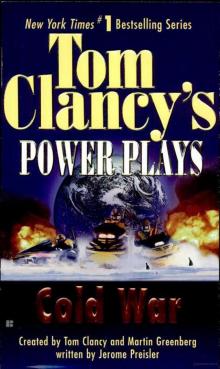 Cold War pp-5
Cold War pp-5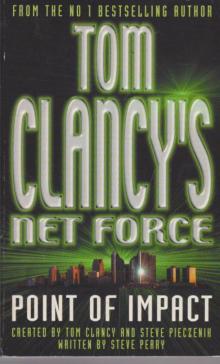 Point of Impact nf-5
Point of Impact nf-5 Red Rabbit jr-9
Red Rabbit jr-9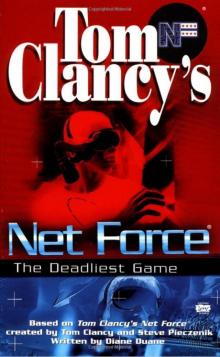 The Deadliest Game nfe-2
The Deadliest Game nfe-2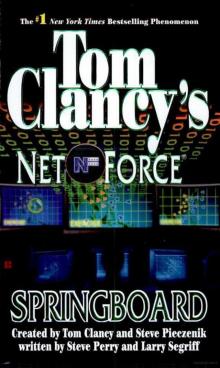 Springboard nf-9
Springboard nf-9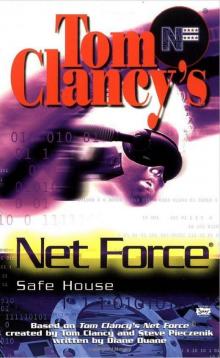 Safe House nfe-10
Safe House nfe-10 EndWar e-1
EndWar e-1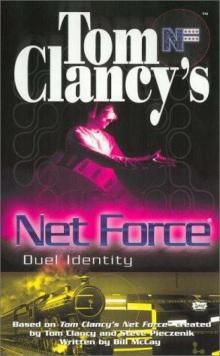 Duel Identity nfe-12
Duel Identity nfe-12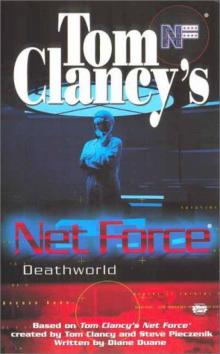 Deathworld nfe-13
Deathworld nfe-13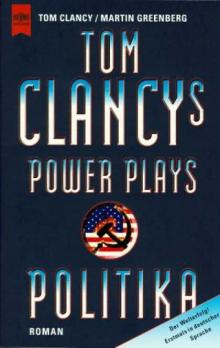 Politika pp-1
Politika pp-1 Rainbow Six jr-9
Rainbow Six jr-9 Tom Clancy's Power Plays 1 - 4
Tom Clancy's Power Plays 1 - 4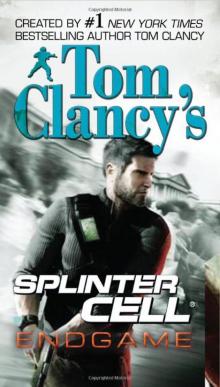 Endgame sc-6
Endgame sc-6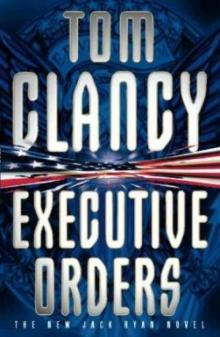 Executive Orders jr-7
Executive Orders jr-7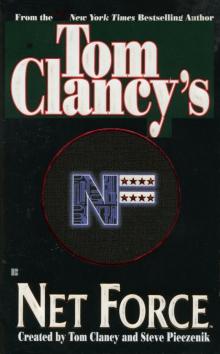 Net Force nf-1
Net Force nf-1 Call to Treason o-11
Call to Treason o-11 Locked On jrj-3
Locked On jrj-3 Against All Enemies
Against All Enemies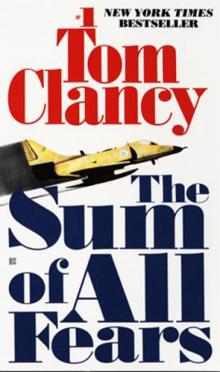 The Sum of All Fears jr-7
The Sum of All Fears jr-7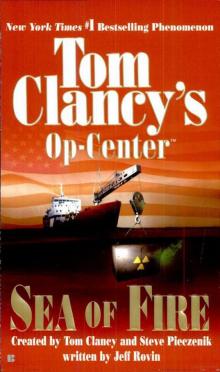 Sea of Fire o-10
Sea of Fire o-10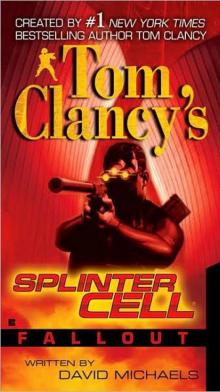 Fallout sc-4
Fallout sc-4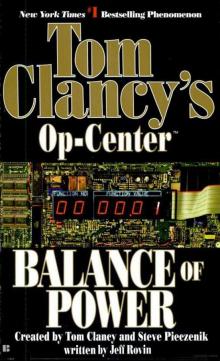 Balance of Power o-5
Balance of Power o-5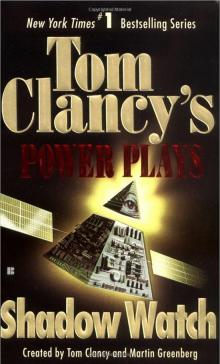 Shadow Watch pp-3
Shadow Watch pp-3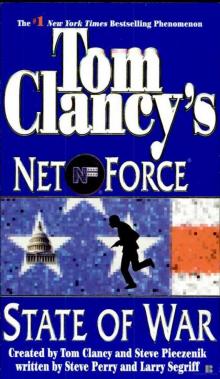 State of War nf-7
State of War nf-7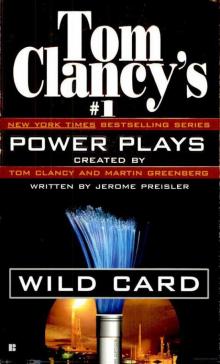 Wild Card pp-8
Wild Card pp-8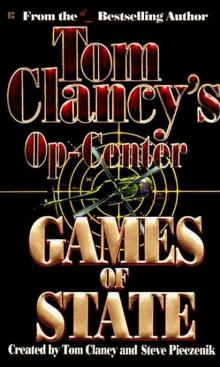 Games of State o-3
Games of State o-3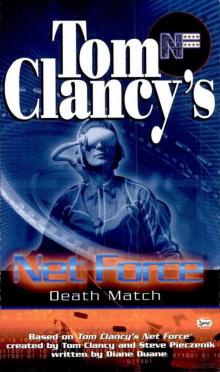 Death Match nfe-18
Death Match nfe-18 Against All Enemies mm-1
Against All Enemies mm-1 Every Man a Tiger: The Gulf War Air Campaign sic-2
Every Man a Tiger: The Gulf War Air Campaign sic-2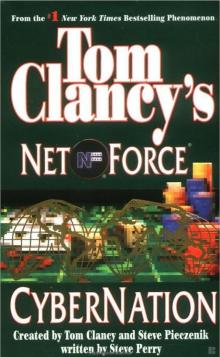 Cybernation nf-6
Cybernation nf-6 Support and Defend
Support and Defend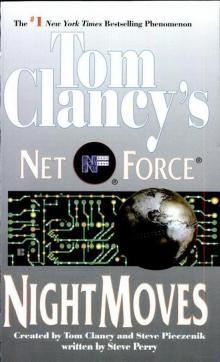 Night Moves nf-3
Night Moves nf-3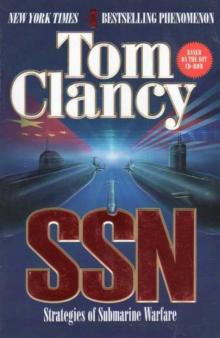 SSN
SSN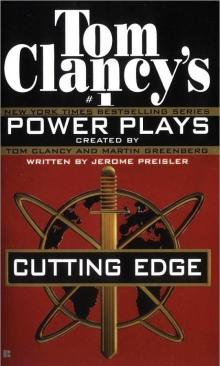 Cutting Edge pp-6
Cutting Edge pp-6 The Cardinal of the Kremlin jrao-5
The Cardinal of the Kremlin jrao-5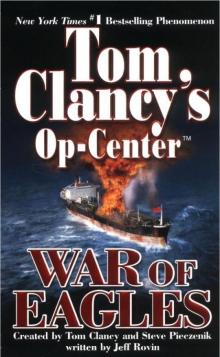 War of Eagles o-12
War of Eagles o-12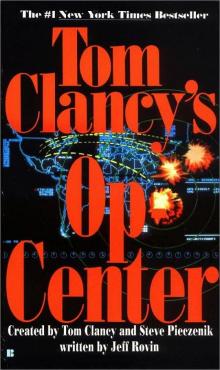 Op-Center o-1
Op-Center o-1 Mirror Image o-2
Mirror Image o-2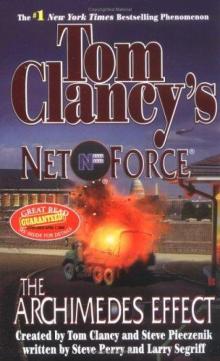 The Archimedes Effect nf-10
The Archimedes Effect nf-10 Teeth of the Tiger jrj-1
Teeth of the Tiger jrj-1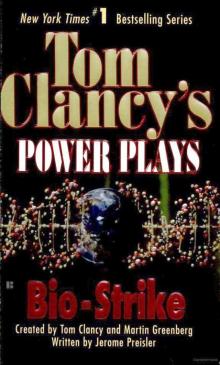 Bio-Strike pp-4
Bio-Strike pp-4 State of Siege o-6
State of Siege o-6 Debt of Honor jr-6
Debt of Honor jr-6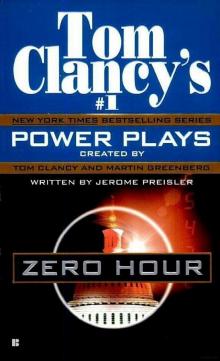 Zero Hour pp-7
Zero Hour pp-7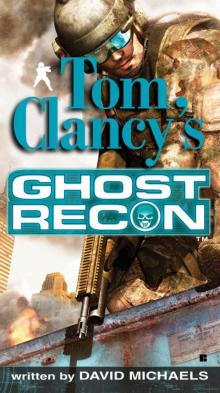 Ghost Recon gr-1
Ghost Recon gr-1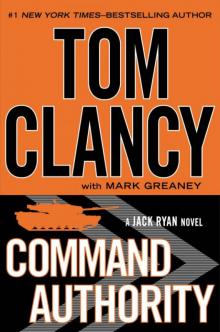 Command Authority jr-10
Command Authority jr-10 Tom Clancy's Power Plays 5 - 8
Tom Clancy's Power Plays 5 - 8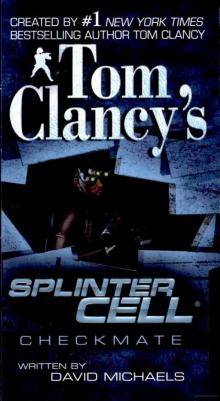 Checkmate sc-3
Checkmate sc-3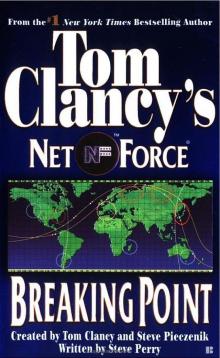 Breaking Point nf-4
Breaking Point nf-4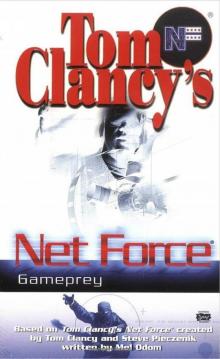 Gameprey nfe-11
Gameprey nfe-11 The Hunted e-2
The Hunted e-2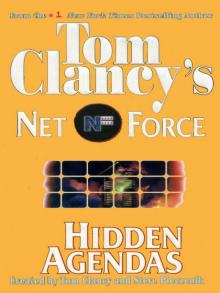 Hidden Agendas
Hidden Agendas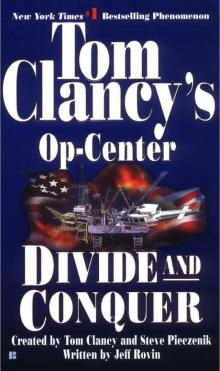 Divide and Conquer o-7
Divide and Conquer o-7